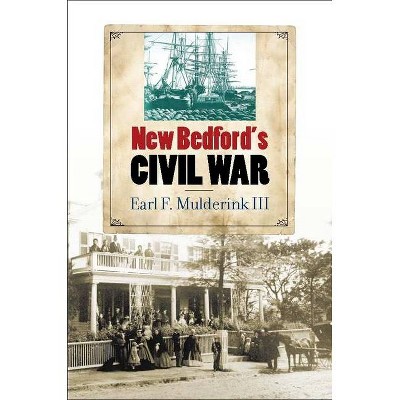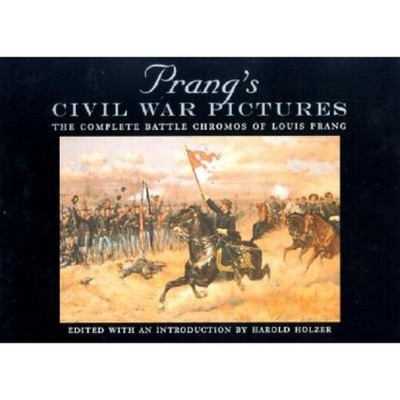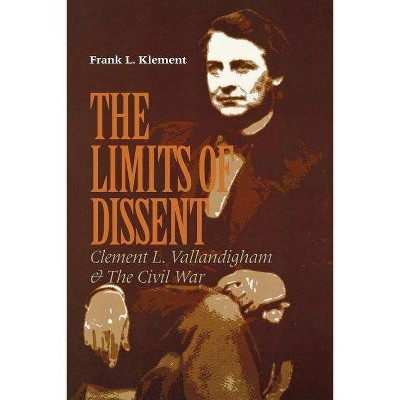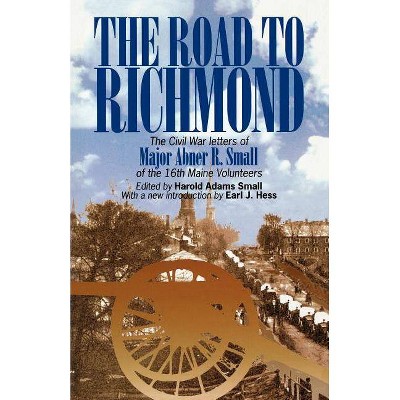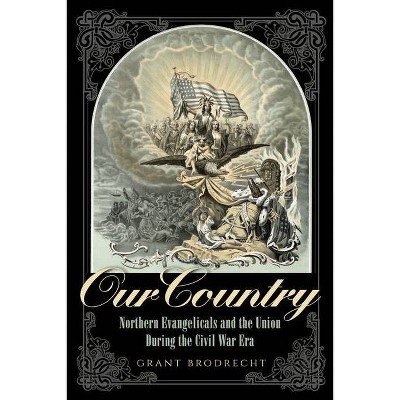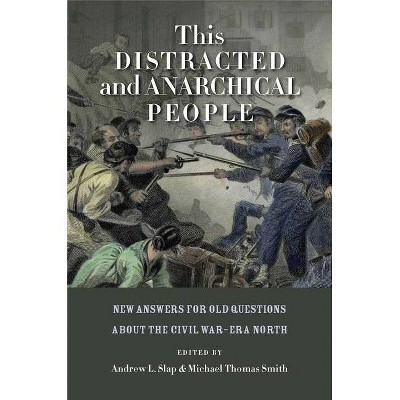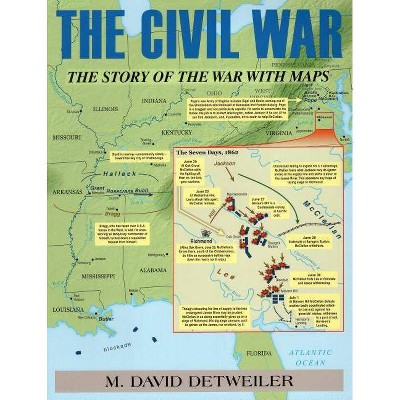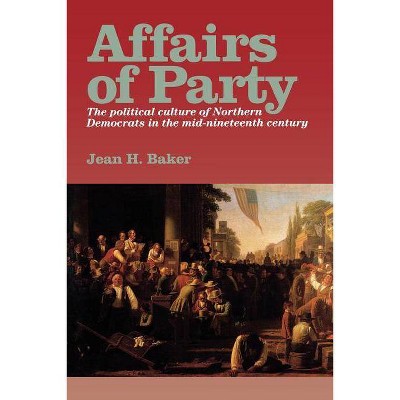On the Edge of Freedom - (North's Civil War) by David G Smith (Paperback)
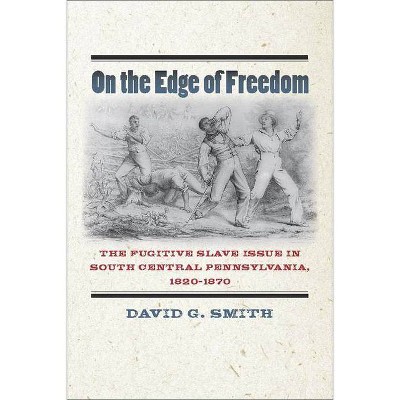
Similar Products
Products of same category from the store
AllProduct info
<p/><br></br><p><b> About the Book </b></p></br></br>Describes the development of antislavery activism in border south central Pennsylvania. Rather than engage in public protest, activists concentrated on protecting fugitive slaves and prosecuting those who sought to recapture them. This approach paid dividends before the Civil War, but did not provide a solid basis for equal opportunity afterwards.<p/><br></br><p><b> Book Synopsis </b></p></br></br><p>In On the Edge of Freedom, David G. Smith breaks new ground by illuminating the unique development of antislavery sentiment in south central Pennsylvania--a border region of a border state with a complicated<br>history of slavery, antislavery activism, and unequal freedom. During the antebellum decades every single fugitive slave escaping by land east of the Appalachian Mountains had to pass through the region, where they faced both significant opportunities and substantial risks. While the hundreds of fugitives traveling<br>through south central Pennsylvania (defined as Adams, Franklin, and Cumberland counties) during this period were aided by an effective Underground Railroad, they also faced slave catchers and informers. "Underground" work such as helping fugitive slaves appealed to border antislavery activists who shied away from agitating for immediate abolition in a region with social, economic, and kinship ties to the South.<br>And, as early antislavery protests met fierce resistance, area activists adopted a less confrontational approach, employing the more traditional political tools of the petition and legal action. <p/>Smith traces the victories of antislavery activists in south central Pennsylvania, including the achievement of a strong personal liberty law and the aggressive prosecution of kidnappers who seized innocent African Americans as fugitives. He also documents how their success provoked Southern retaliation and the passage of a strengthened Fugitive Slave Law in 1850. The Civil War then intensified the debate over fugitive slaves, as hundreds of escaping slaves, called "contrabands," sought safety in the area, and scores were recaptured by the Confederate army during the Gettysburg campaign. <p/>On the Edge of Freedom explores in captivating detail the fugitive slave issue through fifty years of sectional conflict, war, and reconstruction in south central Pennsylvania and provocatively questions what was gained by the activists' pragmatic approach of emphasizing fugitive slaves over immediate abolition and full equality. Smith argues that after the war, social and demographic changes in southern Pennsylvania worked against African Americans' achieving equal opportunity, and although local literature portrayed this area as a vanguard of the Underground Railroad, African Americans still lived "on the edge of freedom." By the 1920s, the Ku Klux Klan was rallying near the Gettysburg battlefield, and south central Pennsylvania became, in some ways, as segregated as the Jim Crow South. The fugitive slave issue, by reinforcing images of dependency, may have actually worked against the achievement of lasting social change.</p><p/><br></br><p><b> Review Quotes </b></p></br></br><br>"David Smith's On the Edge of Freedom is the most nuanced, detailed, and sophisticated study of the Underground Railroad in rural Pennsylvania that I have ever read. Based on a wide variety of primary sources, this study offers a series of fresh insights about how the fugitive crisis along the Mason-Dixon Line directly affected the wider national struggle over slavery and union."<b>-----Matthew Pinsker, <i>Dickinson College</i></b><br><br>"On the Edge of Freedom is a thoroughly researched, informative, and engaging piece of scholarship."-- "--The Civil War Book Review"<br><br>"Smith shows how antislavery activists in Pennsylvania engaged in a number of activities to assist fugitive slaves who entered Pennsylvania from Maryland and Virginia on their quest for freedom. . . Highly recommended."-- "--Choice"<br><br>David G. Smith has delivered a revelatory portrait of one of the most important political battlegrounds of antebellum America, where networks of fugitive slaves, slave-catchers, informers, and Underground Railroad activists lived side by side in a tangled web. He sheds much new light on the struggle of the abolitionism to take route in southern Pennsylvania's difficult soil, and challenges cherished preconceptions of the North as solidly anti-slavery and friendly to fugitive slaves. In the process, he has given us a deeper understanding of the daunting moral complexities of life in the pre-Civil War borderland. This is a book to be reckoned with.<b>-----Fergus M. Bordewich, <i>author of America's Great debate: Henry Clay, Stephen A. Douglas, and the Compromise that Preserved the Union</i></b><br><br>David Smith has produced a fascinating study of 19th-century race relations in the border area of Pennsylvania, which is not usually thought of as a border state.-- "--Civil War News"<br><br>David Smith's 'On the Edge of Freedom' is an important addition to the literature on antislavery in the North. By linking the antebellum and postbellum trajectories of slavery and freedom, readers can understand and appreciate the complexity of antislavery sentiment in a border region influenced by starkly opposed ideologies.-- "--Pennsylvania Magazine of History and Biography"<br><br>In a provocative, well-researched study of race and freedom in south central Pennsylvania, David G. Smith, reveals how African Americans in Adams, Cumberland, and Franklin counties truly lives 'on the edge of freedom' during the half century from 1820 to 1870.-- "--H-Net Reviews"<br><br>In this well wrought and powerful narrative, Smith examines the vital borderland of south central Pennsylvania. Challenging scholars to re-think our understanding of the fugitive slave law, Smith examines that issue through white and black perspectives over nearly fifty years of sectional conflict, war, and reconstruction. This is an important contribution to our understanding of how war itself intensified the fugitive slave issue and redirected it. Smith's thorough appendices demonstrate remarkable and comprehensive research reflected in this important narrative.<b>-----Orville Vernon Burton, <i>author of The Age of Lincoln</i></b><br><br>Solidly researched and documented.<b>-----Christopher Densmore, <i>Friends Historical Library of Swarthmore College</i></b><br><p/><br></br><p><b> About the Author </b></p></br></br><br><strong>David G. Smith </strong>received his Ph.D. in American History from the Pennsylvania State University in 2006. A social historian of the Civil War period, his research centers on the intersection of war, societal conflict, and race. He currently works as a consultant to the Department of Defense.<br>
Price History
Price Archive shows prices from various stores, lets you see history and find the cheapest. There is no actual sale on the website. For all support, inquiry and suggestion messagescommunication@pricearchive.us
